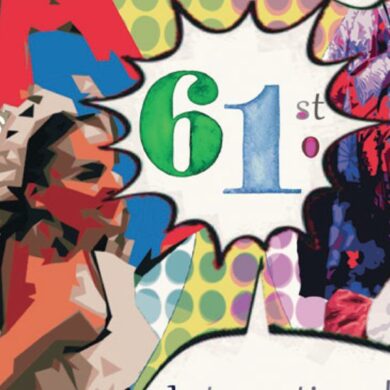“The logic of dreams is superior to the one we exercise while awake. In dreams the mind at last finds its courage: it dares what we do not dare.”
by Maria Popova
Nietzsche saw dreams as an evolutionary time machine for the human mind. Dostoyevsky discovered the meaning of life in one. Mendeleev invented his periodic table in another. Neil Gaiman dreamt his way to a philosophical parable of identity. We are born dreaming. As we go through life, dream-sleep plays plays a major role in regulating our negative emotions.
When we dream, we are our most essential and sovereign selves — our shadows the starkest, our creativity the wildest, and all of it, crucially, ours alone. We build and unravel entire worlds, answering to no one but ourselves — and even that, only hazily. Graham Greene celebrated this sovereignty when he observed in his dream diary that “it can be a comfort sometimes to know that there is a world which is purely one’s own — the experience in that world, of travel, danger, happiness, is shared with no one else.”

We still don’t know exactly why the human animal needs to sleep, much less to dream. But we do know that the mechanism churning our nocturnal fancies is closely related to the faculty we call creativity. Dreams may be the most populist art there is and the wellspring of our most visionary masterpieces.
That is what the Lebanese-American poet, painter, and philosopher Etel Adnan (b. February 24, 1925) explores in a few meditative passages from Journey to Mount Tamalpais (public library) — the 1986 treasure that gave us Adnan on time, self, impermanence, and transcendence.
Adnan writes:
I always thought that dreaming was the honor of the human species. The logic of dreams is superior to the one we exercise while awake. In dreams the mind at last finds its courage: it dares what we do not dare. It also creates: from nightmares to fantastic calculations… and it perceives reality beyond our fuzzy interpretations. In dreams we swim and fly and we are not surprised.
[…]
Dreams spill over on our days. For some people they never stop spilling: the visionaries, the hobos, and all those who speak to themselves, aloud, in the big cities.

Adnan considers the parallels between dreaming and creative work:
Sometimes, while painting, something wild gets unleashed. Something of the process of dreams recurs… but with a special kind of violence: a painting is like a territory. All kinds of things happen within its boundary, equal to the discoveries of the murders or the creations we have in the world outside.
We translate our dreams on paper and cloth, subduing them, most of the time, fearing that moment of truth which has energy enough to blow up the world.
Couple with Adnan on the self and the universe, then revisit Mark Strand’s stunning poem about dreams and Billy Hayes on the science of sleep and sleeplessness.





